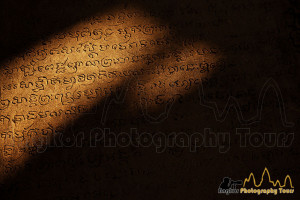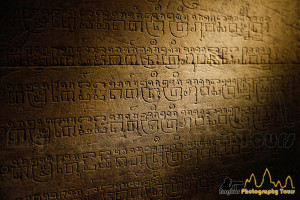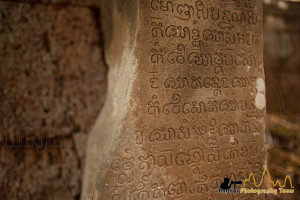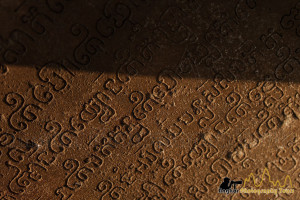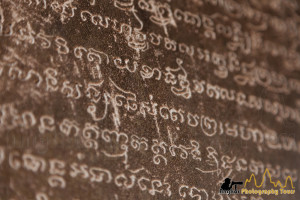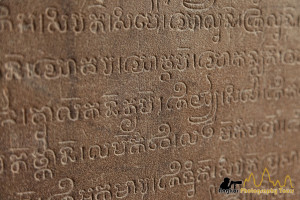Aside from the remarkable elaborate carvings of devatas, apsaras found in many Angkor temples, there are a number of writings carved on stones that one can find on their walls and pillars. Most of the inscriptions are in Sanskrit, which serves as a testimony to the Hindu origin of the temple.
Sanskrit is the classical language of Indian and the main language of Hinduism, Buddhism, and Jainism. One of the 22 official languages of India, Sanskrit is a standardized dialect of the Old Indo-Aryan, originating as Vedic Sanskrit with ancestry tracing back to Proto-Indo-Iranian and Proto-Indo-European. Vedic Sanskrit, comprising mainly of chants and hymns, is closely related to Avestan, the oldest preserved of the Iranian languages. Rigvedic Sanskrit, language of hymns of the Rigveda, is the oldest stage of the language. It is said that Vedic Sanskrit is one of the languages that couldn’t be accurately translated in this age.
During the classical period of Iron Age India at around 4th century B.C., the language evolved into Classical Sanskrit. According to scholars, Classical Sanskrit is a different dialect compared to Vedic Sanskrit. Although quite similar, there are distinct differences in phonology, vocabulary, syntax and grammar.
The word Sanskrit means “refined”, “consecrated” and “sanctified”. It continues to be used mainly as a language for Hindu and Buddhist religious ceremonies.
Below are the picture of few sanskrit writings found on pillars of Angkor Wat, Ta Nei, Kravan and Koh Ker temples.
- Meak Bochea: Celebrating Buddha’s Final Teaching in Siem Reap Cambodia - February 14, 2025
- Angkor Wat Marathon - June 22, 2024
- Timelapse calculator - June 22, 2024
